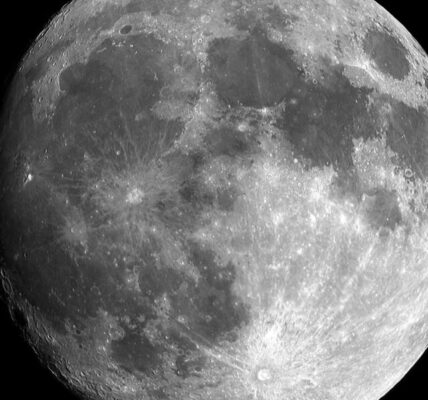Discover the latest findings from the Chang’e-4 mission uncovering hidden structures beneath the moon’s surface. Explore the fascinating world of lunar geology and how it’s reshaping our understanding of our celestial companion.

© Provided by Indy 100
Lunar Geology: Unraveling the Mysteries of the Moon
Hey there, fellow space enthusiasts! Today, we’re diving deep into the captivating world of lunar geology, where groundbreaking discoveries are reshaping our understanding of the moon. Join us as we explore the latest findings from the Chang’e-4 mission and uncover the hidden structures hidden beneath the lunar surface.
The Chang’e-4 Mission: A Giant Leap in Lunar Exploration
In 2018, the Chinese National Space Administration (CNSA) achieved a historic milestone with the successful landing of the Chang’e-4 lander on the far side of the moon. This groundbreaking mission provided us with unprecedented access to the mysterious dark side of our celestial neighbor, opening up a treasure trove of scientific possibilities.
Peering Beneath the Surface: Revealing Lunar Secrets
Since its historic landing, the Chang’e-4 lander has been hard at work capturing breathtaking images and extracting valuable mineral samples from the lunar surface. These efforts have offered us a rare glimpse into the hidden layers that make up the top 1,000 feet of the moon’s crust.
Unveiling Ancient Impacts: Tracing the Moon’s History
One of the most intriguing discoveries made by the Chang’e-4 mission is the presence of a massive crater buried beneath the lunar surface. This crater, formed by a colossal impact billions of years ago, provides vital clues about the violent history of our moon and the cosmic forces that have shaped it over time.
Layers of Discovery: Unraveling the Lunar Landscape
Beneath the surface layers of dust, soil, and broken rocks, researchers have unearthed a fascinating geological history written in layers of lunar lava. These ancient lava flows, which spread across the moon’s landscape billions of years ago, offer insights into the moon’s volcanic past and its evolution over millennia.
A Cosmic Collision: The Birth of the Moon
The moon’s origins have long been a subject of fascination and debate among scientists. According to current theories, our moon formed approximately 4.51 billion years ago when a Mars-sized object collided with Earth, ejecting debris that eventually coalesced to form the moon. This cataclysmic event marked the beginning of a tumultuous journey for our celestial companion.
Echoes of the Past: Traces of Ancient Volcanism
In the wake of its violent birth, the moon continued to be bombarded by space debris, leaving behind a trail of impact craters and fractures on its surface. Meanwhile, deep within its mantle, pockets of molten magma lay dormant, waiting for the right conditions to erupt onto the lunar landscape.

© Provided by Indy 100
A Cooling World: The Decline of Lunar Volcanism
As the eons passed, the moon gradually cooled, and its volcanic activity began to wane. The lava flows that once sculpted its surface grew thinner with each passing eruption, signaling the moon’s transition from a fiery world to a geologically dormant one.
A Geological Enigma: The Mystery of Lunar Magma
While the Chang’e-4 mission has provided valuable insights into the moon’s geological history, many questions still remain unanswered. Could there be pockets of magma hidden deep beneath the lunar surface, waiting to be discovered? The possibility raises intriguing possibilities for future exploration and scientific inquiry.
Looking to the Future: The Promise of Lunar Exploration
As the Chang’e-4 mission continues its groundbreaking work, researchers are hopeful that it’s just the beginning of our journey to unravel the mysteries of the moon. With each new discovery, we come one step closer to understanding our place in the cosmos and the rich tapestry of worlds that surround us.
So there you have it, folks! Thanks for joining us on this exhilarating journey through the world of lunar geology. Stay tuned for more exciting updates as we continue to explore the wonders of our celestial neighbor and unlock the secrets of the universe.
ALSO READ:
“Solar Storms 2025: 5 Terrifying Impacts You Need to Know”



